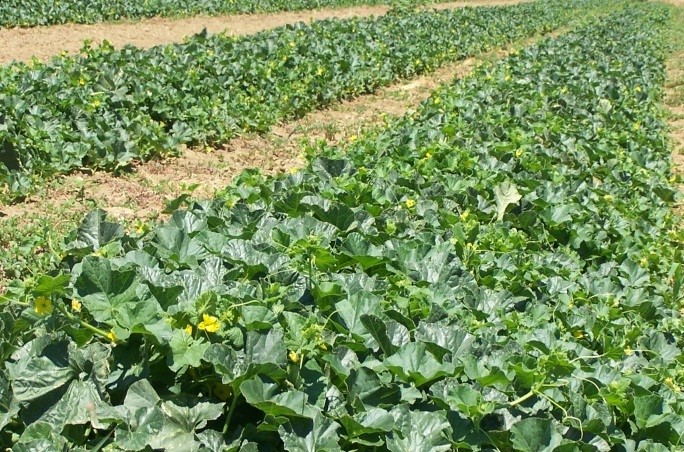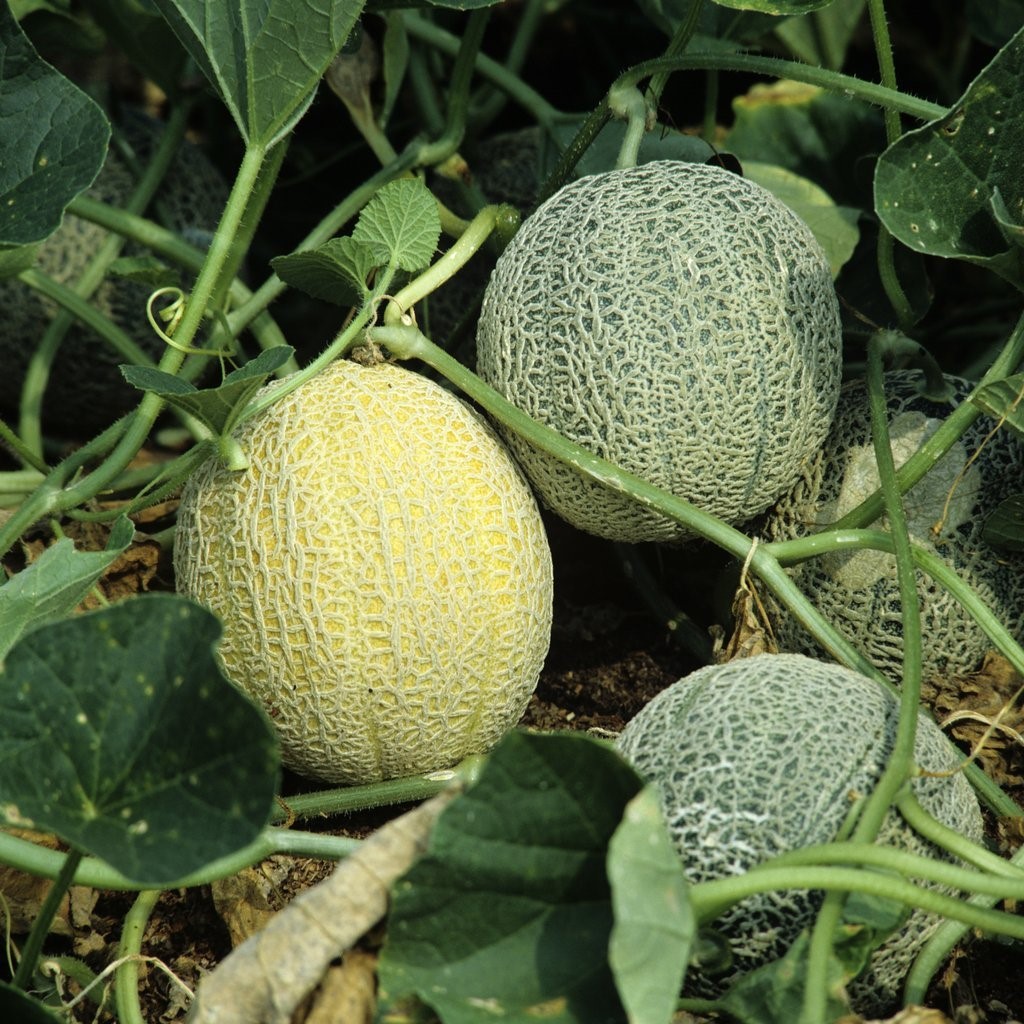The purpose of this trial is to test the effect of two SANBIO products, namely Sanbio PLANTA and Sanbio EPSOMIT, on crop development, the incidence of fusarium head blight and some quality parameters including sugar levels.
1. Methods and material
The plot of one hectare was divided into three lots, the 1st was treated with PLANTA, the 2nd lot was treated with EPSOMIT and the last lot is reserved as a control. The products were applied at the 3-4 leaf stage (transplanting) at a rate of 1 kg/ha for PLANTA and 1.5 kg/ha for EPSOMIT. Both products were applied via the irrigation system (drip). Throughout the crop, the incidence of fusarium head blight and any parameters of fruit production and quality were monitored.
2.1. Effect of both treatments (PLANTA and EPSOMIT) on plant growth
One week after transplanting the plants and treatment by both products, the treated lots showed more vegetative growth than the untreated lot. In addition, treatment with PLANTA or EPSOMIT means that the number of plants lost at the time of transplanting is very low (0.6% for PLANTA and 0.46% for EPSOMIT) compared to the treated lot where this percentage was 7.8%.
These results show that the application of PLANTA or EPSOMIT significantly reduced the number of missing items. Figure 1 shows that the plot treated with EPSOMIT the plants have recovered well with a larger vegetative growth with a small number of missing with a dark green aspect of the plants.

Figure 1. Effect of the application of EPSOMIT on vegetative aspect seedlings (green plants effect)
2.2. Effect of both products on the incidence of Fusarium Head Blight
Throughout the crop cycle and after counting plants that have been wilted as a result of melon fusarium head blight, the total number of these in the plots treated with PLANTA or EPSOMIT did not exceed 1 plant/line or 2% only knowing that the plot is known to be highly infected with F. oxysporum f. sp. melonis. Moreover, the statistical analysis did not reveal any significant difference between the lines where PLANTA was added and those treated with EPSOMIT.
In addition, it was noted as already mentioned that the application of Planta or Epsomit resulted in more vegetative growth with a dark green appearance compared to the control (Figure 1).
The most important vegetative growth and the green effect observed in plots treated with PLANTA or EPSOMIT would be explained by the induction of the defence mechanisms of the plants under the effect of the useful microorganisms contained in the products.
2.3. Effect of the application of both products on fruit yield and quality.
At the end of the crop and after calculating the total cumulative yield per plot, the production in the untreated plot was only 16 tonnes/ha.
However, in the plot where PLANTA was applied, 22 tonnes were exceeded and it was 23 tonnes/ha in the case of the plot treated with EPSOMIT or a minimum yield increase of more than 6 tonnes respectively more than 37%.
This increase is explained in this case essentially by 3 effects caused by the application of the two products:
– Reduction of missing items
– Greater vegetative growth and therefore larger fruit size.
– Reduced incidence of fusarium head blight.
Figure 2 shows that plants treated with EPSOMIT for example produced fruits of almost the same size (fruit which are almost identical), a criterion highly appreciated by traders since these fruits are of good price and large fruits with low size are low and therefore a higher income.

Figure 2. Fruits produced by EPSOMIT – treated plants of almost the same size
2.4. Effect of the application of EPSOMIT and PLANTA on the sugar content of fruit.
The measurement of the sugar content in the three plots (PLANTA, EPSOMIT and the control) showed that the fruits of the plot where EPSOMIT was applied showed a sugar content of 13.4°Brix. As for the fruit from the PLANTA treated plot, the sugar content is 13.2°Brix, which is still statistically higher than that measured on the fruit from the control plot which did not exceed 12.7°Brix.

Figure 4. Sugar content [°Brix]
3. Results
These results show that the treatment of melon plants with either PLANTA or EPSOMIT has not only led to a reduction in shortages and the incidence of fusarium head blight, but also an increase in yield and an improvement in fruit quality.
